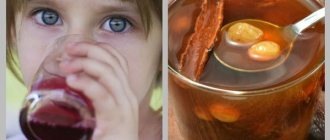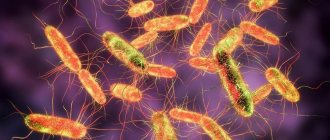Co-author, editor and medical expert - Klimovich Elina Valerievna.
Number of views: 317 496
Last updated: 08/25/2021
Constipation is a decrease and difficulty in bowel movements. The process of bowel movement can be accompanied by pain, require straining, and leave a feeling of incompleteness¹. Nowadays, this condition is quite common in children of all age groups. Until now, among gastroenterologists and pediatricians there is no single position on the treatment and prevention of this pathology, although its prevalence reaches 30%, and girls are affected more often than boys².
Causes of constipation in children
At the beginning of the development of this disease, the child may voluntarily hold stool if the stool is dense and difficult to pass or there are distractions (games, walks, interesting activities). The rectal ampulla is filled with fecal contents. Water is absorbed from it, the stool becomes dense, and excessive overstretching of the lower intestines reduces the urge to defecate and contributes to the occurrence of stool.
This condition is promoted by:
- poor nutrition. For infants - early introduction of complementary foods, a large proportion of solid foods and thick cereals, food based on whole cow's milk, refusal of breastfeeding. In older age groups - lack of fiber in the diet, reduced fluid intake;
- psychogenic factors. In children under 24 months, the pathology is often caused by improper formation of toilet skills, when parents force the child to potty train and every act of defecation is associated with stress. Stool retention may be accompanied by the beginning of visiting organized children's groups (kindergarten, school)4;
- reduction in the amount of beneficial intestinal microflora and proliferation of pathogenic ones. Normally, microorganisms are able to stimulate peristalsis due to the production of lactic acid;
- increased body temperature;
- inflammatory diseases of the rectum and anal fissure;
- hereditary diseases of the gastrointestinal tract (Hirschsprung's disease, dolichosigma);
- helminthiases.
Drinking regime
For effective treatment, it is important to increase the amount of fluid the child drinks during the day. At the age of up to one year, the daily volume of required fluid is approximately 100 ml. If the child is over 1 year old and his weight is less than or equal to 20 kg, then the volume of required fluid is calculated using the formula: 100 ml + 50 ml for each kg of weight over 10 kg. For children whose weight exceeds 20 kg, the following formula applies: 600 ml + 20 ml for each kg of weight over 20 kg6.
You should limit sugary carbonated drinks, cow's milk, and store-bought juices. Due to the high sugar content, such a drink satisfies the appetite, the child refuses to eat, including foods that are useful for constipation. Give preference to still drinking water, unsweetened fruit drinks, compotes, and herbal teas.
It is advisable that the child begin every morning with a few sips of clean, cool water on an empty stomach.
What to feed your baby
We adhere to the following simple rules to restore normal functioning of the digestive system:
- First of all, you need to eat often so that your stomach is constantly working. Three main meals and several snacks will be enough for the child.
- The last meal should be at least 2 hours before bedtime.
- A constipated child's diet should include foods with plenty of fiber. It is dietary fiber that allows you to eliminate stagnation of feces in the colon.
- Morning exercises and physical activity throughout the day are mandatory. It is useful to massage the tummy to normalize the functioning of the digestive system.
- Bran will help speed up the natural processes of bowel movements. One spoon before meals is enough to cleanse the intestines of toxins. Children under one year of age can be treated with a bran decoction, which has a gentle effect on the gastric mucosa, activating its work.
- The daily menu should include fresh vegetables and fruits, cereals and fermented milk products, which help normalize the functioning of the gastrointestinal tract.
Authorized Products
The child’s daily diet should include safe foods that do not cause allergic reactions and remove stagnant feces from the body naturally.
So, children can eat:
- Vegetable dishes based on carrots, cabbage, beets, pumpkins and zucchini. You can feed your child a salad of cucumbers and tomatoes, prepare a vegetable stew or borscht.
- Barley and buckwheat allow you to restore normal stomach function.
- Wheat or oat bran.
- Wholemeal bread.
- Fermented milk products, such as yogurt, cottage cheese or kefir.
- Fruit and vegetable juices.
- Fruits such as plums, apples, prunes.
- Jams and jams.
- Natural honey, if there is no allergy.
Prohibited Products
What should not be given to a child if he has problems with bowel movements? It is recommended to exclude the following foods from your daily diet:
- Coffee, cocoa and black tea.
- Rice and semolina.
- Kissel and jelly.
- Bakery and confectionery products.
Table: which products strengthen and which weaken
| Laxative products | Products that strengthen |
| Kefir, yogurt, cottage cheese, fermented baked milk | Bakery products, pasta |
| Buckwheat, wheat groats, bran | Rice and semolina |
| Cabbage, carrots, beets, cucumbers, tomatoes, greens | Onions, garlic, radishes |
| Apples, plums, prunes, dried apricots | Coffee and black tea |
| Honey, sugar syrups, jam | Gelatin and jelly |
| Sunflower and olive oil | Fatty meats and fish |
Menu
The child's daily diet should include laxative foods to restore the natural processes of bowel movements. Only after consulting a doctor can any methods of treating constipation in infants be used. At 4 years old, you can expand your daily diet with foods that do not cause allergic reactions in children.
Basic principles of dietary nutrition
To improve children's digestion and prevent stool retention, you need to properly adjust the diet. The basic rule of a therapeutic diet for constipation in children is to increase the proportion of foods rich in dietary fiber (fiber). It not only stimulates intestinal peristalsis, but also provides a breeding ground for the growth of beneficial microflora7.
Below are the main principles of the diet:
- eat often, but in small portions. The baby should have 3 main meals (breakfast, lunch, dinner) and 2 snacks between them (2nd breakfast, afternoon snack);
- For children over 2 years old, take their last meal no later than 2 hours before going to bed;
- a sufficiently high-calorie breakfast is required, which promotes reflex bowel movement in the first half of the day;
- during snacks it is necessary to give fresh fruits and berries;
- It is useful to include vegetables, fermented milk dishes, and cereals in the menu every day.
How to deal with childhood constipation
When dealing with constipation, follow these recommendations:
- You should consult a doctor. If constipation occurs frequently, visit the doctor with your child. Digestive disorders may indicate gastrointestinal pathologies, which, if detected early, are easier to treat.
- It is advisable to avoid overuse of medications. Laxatives and enemas give a quick effect and promote the passage of feces, but if they are abused, the tone of the intestinal walls worsens. This makes the problem worse. Medicines are used only in extreme cases after assessing harm and benefit.
- You need to go on a diet plan. Nutrition can worsen or enhance intestinal motility, so it is important to regulate the diet. The main diet for chronic constipation in children is table No. 3.
- You need to get massages. They enhance peristalsis and promote faster passage of feces through the intestines. Massage can be a good alternative for those children who are not yet able to sit independently.
- More active activities should be introduced into your daily routine. With a high level of mobility, feces move better through the gastrointestinal tract due to the work of muscles. Therapeutic gymnastics improves peristalsis well.
If a child has constipation, a number of clinical recommendations must be followed.
To quickly normalize the condition, it is important to follow a drinking regime and eat according to a schedule.
The importance of drinking regime
Constipation is often a consequence of dehydration. When the body lacks moisture, it goes into a stressful state and begins to conserve fluid. The main symptoms early on are headaches, dry mouth, constipation and lethargy. For this reason, it is important to drink enough water.
While the child is small, parents will have to control him. Older children are able to follow recommendations on their own or with minimal adult intervention.
The normal daily amount of fluid consumed depends on age:
- From 1 to 3 years. The general norm is 1 liter.
- From 4 to 8 years. The general norm is 1.4 liters.
- From 9 to 13 years. Boys should drink 1.9 liters. For girls, 1.7 liters is enough.
- From 14 to 18 years old. Boys drink 2.6 liters per day, girls - 1.9 liters.
The daily volume of water does not include other drinks, liquid and juicy foods, sparkling water, etc. They are only a supplement.
Chemical composition of products
For constipation, the child’s menu must include dishes rich in fiber. These are coarse fibers that improve peristalsis and cleanse the intestines of rotting food particles. Fiber is found mainly in plant foods: fruits, vegetables and grains. In the latter case, it is better to prefer whole grains. The more grains are processed, the more nutrients they lose. There is almost no fiber in instant porridges.
Meal frequency
The number of meals is increased to at least 5. Breakfast is never skipped. Dinner should be no later than 2 hours before bedtime. If your child gets hungry between meals, you can offer him fresh fruit as a snack.
Portions for fractional meals should be small.
Diet No. 3
Diet No. 3 for children with constipation is therapeutic, helping to establish regular bowel movements. This diet can also be prescribed by a doctor for inflammatory diseases of the gastrointestinal tract without exacerbation and anal fissure. The rules for organizing table No. 3 are as follows:
- the daily diet is divided into 5-6 meals with an interval of 2-3 hours so that there is no feeling of hunger;
- The ratio of proteins, fats and carbohydrates in the menu should average 1:1:3.58. For teenagers over 12 years old, this is approximately 80–90 g of protein and fat, 300–400 g of carbohydrates. For ages 6 to 12 years - 60-70 g of proteins and fats, 250-350 g of carbohydrates. Children under 6 years old are another 20% less;
- 70% of the daily value of proteins and fats should be of animal origin9;
- the menu includes a large number of raw fruits and vegetables;
- products included in the diet must be crushed so as not to provoke pain and intestinal spasms;
- on an empty stomach, drink a glass of pure water without gas or beetroot juice diluted with water in a ratio of 2 to 1;
- During the day, the drinking regime is strictly observed;
- Spices and foods that cause putrefactive and fermentative processes in the intestines (mashed potatoes, sweets, baked goods, jelly) are excluded from the diet.
What can you feed your baby?
The success of treatment largely depends on what diet is followed for constipated children. The main point in such a menu is an abundance of plant foods, fresh or subjected to the most gentle processing.
Allowed food:
- vegetables (carrots, zucchini, cauliflower, bell peppers, eggplants). Can be consumed in the form of salads with vegetable oil;
- fruits and berries (apples, pears, cherries, apricots, currants, raspberries);
- porridge (buckwheat, millet, barley, pearl barley). They should not be boiled; dilution with milk or water to obtain a liquid dish is allowed;
- soups (lean with vegetable broth or cooked with lean meats);
- meat dishes. Shredded and steamed (cutlets, meatballs, zrazy). It is better to complement them with a vegetable side dish;
- Bakery products should be selected from whole grain flour or with the addition of bran, and lightly dried before serving;
- dried fruits (prunes, raisins, dried apricots, figs).
What should you not feed your child?
Completely excluded from the diet:
- products made from premium flour, yeast dough, baked goods;
- canned meat and fish, sausages, smoked meats;
- fatty meats;
- fried and hard-boiled eggs;
- semolina and rice cereals;
- legumes;
- radish, garlic, radish, onion;
- mushrooms;
- cooking fats, confectionery products;
- pasta;
- jelly and jelly;
- carbonated drinks.
Infants
In infants, the mechanisms of nervous regulation of the gastrointestinal tract are immature, so the urge to defecate in response to irritation of the rectum with feces may be weakly expressed. In addition, infants under one year of age may experience signs of enzymatic deficiency and difficulty in digestion.
For breastfed babies, mother's nutrition is very important. Breastfeeding women should adhere to the following rules:
- maintain adequate drinking regime. Lack of fluid can increase the fat content of milk and make it difficult to digest;
- limit the consumption of sweets and baked goods, as this can lead to changes in the chemical composition of breast milk;
- increase the content of sources of dietary fiber and vegetable oils in the diet. This helps maintain the normal intestinal microflora of the mother and ensure the supply of essential vitamins and minerals to the milk10.
According to WHO recommendations, a baby up to 6 months can be exclusively breastfed and does not need additional food or water11. Breastfeeding should be done on demand and continued until the child is two years of age or older11.
Complementary feeding should be introduced from 6 months in small quantities, offering new foods to infants aged 6–8 months 2–3 times a day, and to infants aged 9–24 months 3–4 times a day12.
For babies with stool retention who are bottle-fed, it is better, on the recommendation of a pediatrician, to give partially or completely hydrolyzed formulas and supplement with water.
Diet for a child from 1 to 3 years old
The nutrition of children from 1 to 3 years old includes:
- vegetable and fruit purees. You can cook them yourself or buy store-bought ones. Alternatively, you can make a mixture of apples and carrots by grating them and adding a little sugar;
- vegetables can be served finely chopped (in salads) or heat-treated (baked, boiled, stewed);
- It is recommended to soak dried fruits before serving. It is better to give preference to prunes and dried apricots;
- the baby needs to receive the daily amount of animal proteins from boiled meat and fish necessary for growth and development;
- It is advisable to offer fermented milk products. It is allowed to add a small amount of sugar to them.
What can children from 3 to 7 years eat?
Before the age of 7, it is recommended to eat about 20 grams of fiber per day. This amount is contained in approximately 400 g of vegetables and fruits. From 3 years of age you can include in your diet:
- chopped vegetables and fruits;
- pumpkin and sunflower seeds, nuts;
- bran and whole grain bread;
- fresh juices;
- porridge with the addition of dried fruits (buckwheat, wheat, millet);
- fermented milk drinks enriched with dietary fiber.
How to put a child on a diet?
Children with already formed taste preferences have difficulty switching to therapeutic nutrition. This can lead to hysterics, refusal of new food and “hunger riots”. To prevent this from happening, you should adhere to the following rules:
- remove “harmful” foods and introduce healthy ones gradually;
- give preference to those dietary products that give the fastest effect and lead to bowel movements from the first day of use (wheat bran);
- choose sources of dietary fiber that can be added to your child’s usual dishes (mix dried fruit puree into kefir, add sweet fruit to porridge).
Before breakfast, children can drink a glass of cool water to stimulate the gastrointestinal tract.
Laxative products
- Vegetables. Beets, carrots, cucumber, cabbage, zucchini, pumpkin, green beans, green peas.
- Fruits. Apple, pear, kiwi, plum, avocado, apricot, grapes, etc.
- Greenery. Parsley, dill, lettuce, spinach, green onions.
- Dried fruits. Prunes, dried apricots, raisins, dates, figs.
- Dairy products. Natural yogurt, cottage cheese, kefir, yogurt, fermented baked milk.
- Cereals. Buckwheat, pearl barley, oatmeal, millet,
- Vegetable oils. Sunflower, olive, flaxseed.
- Lean meats and fish. Turkey, chicken, rabbit, lean beef, pollock, cod, hake, red fish.
- Bran.
General recommendations
The restoration of regular bowel movements is facilitated by:
- accustoming the baby to emptying the rectum at the same time, preferably in the first half of the day;
- performing a massage to stimulate bowel function using circular movements around the navel in a clockwise direction for about 10 minutes;
- dietary regimen in compliance with the frequency of meals, food menu and drinking regimen;
- ensuring sufficient physical activity;
- the use of laxatives as a mandatory component of treatment13.
Exercises for constipation
To ensure stable bowel function, you must lead an active lifestyle. Healthy children should spend a lot of time outdoors, running and jumping. It is useful to enroll children in various sections, visit the pool and gym. Also, regular exercise in the morning will have a positive effect on the functioning of important organs and systems.
It is recommended to draw in and relax the abdominal muscles during inhalation and exhalation to activate the digestive system. Abdominal massage will help restore normal digestive processes.
Prevention
In many cases, it is easier to prevent a disease than to treat it. This rule also applies to constipation in children:
- you need to maintain breastfeeding for as long as possible and follow the rules for introducing complementary foods;
- timely and psychologically comfortable formation of toilet skills in the period from 18 to 24 months of life;
- teach the correct posture during bowel movements (hips bent, legs on the floor or slightly elevated);
- never rush the child during the process of defecation;
- organize children's sports activities, walking and morning exercises.
The information in this article is for reference only and does not replace professional advice from a doctor. To make a diagnosis and prescribe treatment, consult a qualified specialist.
Literature
- Zakharova I. N., Sugyan N. G., Maykova I. D., Berezhnaya I. V., Kolobashkina I. M. Constipation in children: to help the pediatrician. Issues of modern pediatrics. 2015; 14(3):380–386.
- Buddingh KT, Wieselmann E. et al. Constipation and nonspecific abdominal pain in teenage girl referred for emergency surgical consultation. JPGN. 2012; 54 (5):672 – 676. Budding, Weilsman et al. Constipation and nonspecific abdominal pain in adolescent girls referred for emergency surgical consultation.
- Kornienko E. A. Mechanisms of chronic constipation in children and tactics for their correction / St. Petersburg State Pediatric Medical University. Medical advice. 2013; 2: 110-116.
- Drassman DA Functional gastrointestinal disorders: history, pathophysiology, clinical features, and Rome IV. Gastroenterology. 2016 Feb 19. Drossman D. A. Functional gastrointestinal disorders: history, pathophysiology, clinical features and Rome IV criteria.
- Khavkin A.I., Fayzullina R.A., Belmer S.V. et al. Diagnosis and tactics of managing children with functional constipation // Questions of practical pediatrics, 2014, vol. 9, no. 5, p. 62-76.
- I. N. Zakharova, N. G. Sugyan, I. K. Moskvich. Russian and international recommendations for the management of children with constipation. Russian Medical Academy of Postgraduate Education, Moscow, RF. Outpatient and polyclinic center No. 133, Moscow, Russian Federation. Issues of modern pediatrics. 2014; 13 (1): 74 – 83.
- Shulpekova Yu. O., Sheptulin D. A., Shulpekova N. V. Principles of rational nutrition for constipation. Federal State Autonomous Educational Institution of Higher Education "First Moscow State Medical University named after I.M. Sechenov" of the Ministry of Health of the Russian Federation, Moscow, Russian Federation. Russian Journal of Gastroenterology, Hepatology, Coloproctology. 2018; 28 (5): 117 – 125.
- Soltan M. M., Borisova T. S. Hygienic requirements for the organization of nutrition for children and adolescents. Belarusian State Medical University. Educational and methodological manual. 2021: 6-7.
- National program for optimizing the nutrition of children aged 1 to 3 years in the Russian Federation. Tutelyan V. A., Baranov A. A. Union of Pediatricians of Russia M.: Pediatr, 2015: 13.
- Kodentsova V. M., Gmoshinskaya M. V., Vrzhesinskaya O. A. Vitamin and mineral complexes for pregnant and lactating women: justification of composition and dosages. Federal State Budgetary Institution "Research Institute of Nutrition", Moscow. Reproductive health of children and adolescents. 2015; No. 3: 73 – 83.
- WHO/Fact sheets/Infant and young child feeding.16 Feb 2018.
- WHO Breastfeeding in the 21st century: epidemiology, mechanisms, and lifelong effect. Victora, Cesar G et al. The Lancet, Volume 387, Issue 10017, 475 – 490, 2021. WHO Breastfeeding in the 21st century: epidemiology, mechanisms and lifelong effects.
- Kamalova A. A., Shakirova A. R. Functional constipation in young children: diagnosis and therapy in practice. State Budgetary Educational Institution of Higher Professional Education "Kazan State Medical University" of the Ministry of Health of Russia; GBOU DPO "Kazan State Medical Academy" of the Ministry of Health of Russia. Russian Bulletin of Perinatology and Pediatrics, 2016 (4): 108 – 112.











